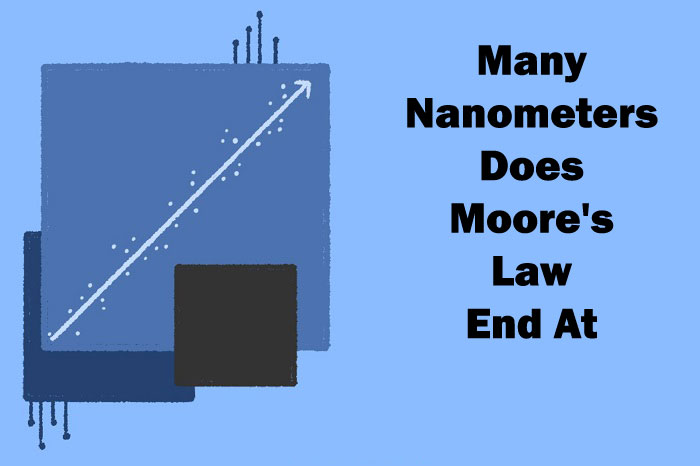
Founder of Intel hit, still in the 1970s, what would be the pace of growth of computational power in the following decades
In 1965, the number of transistors present in an integrated circuit reached a mere sixty-four. In January 2023, Apple launched new MacBook Pro and Mac Mini models, with processors that can reach a bizarre 67 billion transistors.
The comparison with 1965 has a reason: it was when engineer Gordon E. Moore, one of the founders of Intel, published an article in which he predicted that the number of transistors in an integrated circuit – a processor, for example – would double every year. A decade later, in 1975, he revised his prediction: the 100% increase in the number of transistors would occur within a period of about two years.
This last formulation gave rise to the so-called Moore’s Law, a prediction that guided the evolution of the chip industry for years to come. A greater number of transistors in a processor means, in practice, more computational power; looking at that aspect, we can say that Moore got it right.
But not everything is forever. Moore’s Law may be on the verge of hitting what Moore himself called an “insurmountable barrier”, its natural end. That, of course, depends on who you ask. There are those who say that this barrier has already been reached and that Moore’s Law is a thing of the past.
The smaller the better
Transistors are semiconductor devices that release or block the flow of electrical currents. They also amplify electrical signals. It is their multiplication that allowed computing to advance at so many levels from the 1960s onwards.
If the idea is that a processor has many transistors, then they need to be small. And the smaller the space between these tiny transistors, the more of them will fit on a chip. Thus, the industry advanced in techniques to create smaller and smaller transistors.
It is no coincidence that they are measured in nanometers. One nanometer is equal to one billionth of a meter. In the latest generation of Intel’s Core lineup, transistors go as small as 10 nanometers; the aforementioned MacBook Pro and Mac Mini have 5-nanometer chips. It is the dispute for miniaturization.
This is where the insurmountable barrier comes in, a term used by Gordon Moore himself in an interview in 2015. It turns out that there is a physical limit to the reduction in component size. After all, eventually, you get down to the dimensions of the atom – and let’s just say that transistors on atomic scales would be rather difficult to produce and control.
In one hour, therefore, there will be no more miniaturization. Moore even gave a deadline: five to ten years. Since that was said in 2015, the moment of the impassable barrier would be just around the corner.
“Moore’s Law is dead”
Nvidia CEO Jensen Huang seems to believe the barrier has already been reached. The executive declared the death of Moore’s Law in September of last year.
The claim comes from an economic perspective, but of course, it’s also a poke at Intel. Nvidia GPUs dominate the market and have become very important for artificial intelligence training. By declaring the end of Moore’s Law, Huang emphasizes the technical superiority of his own product.
But the executive has a point. After all, for some time now, big leaps in processing capacity have not been observed in computers aimed at the general public. The new generations bring increments, and improvements in specific functions, but it is undeniable that the pace of evolution is no longer the same.
The exception would be the GPU market, where the improvements are very clear. In the case of traditional processors, performance would be in full deceleration. According to Farsight, a publication linked to the Copenhagen Institute for Future Studies, the improvement in performance between 1986 and 2001 was 52% a year; however, by 2018, it had dropped to just 3.5%.
For the average user, perhaps Moore’s Law is indeed behind us. Or maybe we should interpret it more broadly, understanding any kind of progress, even punctual ones, as evidence of its validity.
Perspectives toward the end
At Tecnocast 284, we talked about what is being done in the industry to continue progressing in processing capacity, with or without Moore’s Law.
Intel is betting on new technologies to continue extracting more performance from its processors. Architecture changes, more optimized transistors, and new chip manufacturing processes are on the company’s agenda, which projects to reach chips with 1 trillion transistors in 2030.
Another technology worth mentioning is chipsets. In short, they are smaller chips that can be combined into a larger chip. In this way, a high number of transistors could be distributed among several chipsets – a way to circumvent the miniaturization problem.
In addition to these solutions, there is also the prospect of completely new techniques, which are still in the research phase. We have quantum computing, for example. The idea here is not for the home user to use it directly with a quantum computer, but to access it via the cloud and take advantage of its processing power.
However, we know that quantum computing still needs to evolve to reach this level. Likewise, it is worth mentioning the chips with carbon nanotubes. They are excellent semiconductors and smaller than the silicon transistors used today.
But there is the manufacturing bottleneck: the technique would be very different from that used to build the chips that the industry is used to. MIT scientists managed to develop a 16-bit microprocessor with carbon nanotubes in 2019. It had only 14,000 transistors. As you can see, research needs to advance.
There are several possible paths, therefore, and it is likely that the future of the chip industry will go through several of them. After all, however, we interpret Moore’s Law, one thing is certain: the quest for more computational power will never stop.
